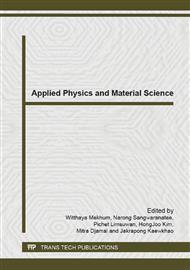p.351
p.355
p.359
p.363
p.366
p.370
p.374
p.378
p.382
Carboxymethyl Cellulose from Pineapple Peel: Useful Green Bioplastic
Abstract:
The pineapple peel cellulose can be convert to carboxymethyl cellulose (CMC) by etherification. The pure cellulose from pineapple can be prepared by refluxing of pineapple peel powder with 0.5 M HCl and 1 M NaOH solution at 90°C for 1 h and 2 h, respectively. Then, the solid material was bleached with calcium hypochlorite. The pure cellulose was soaked in mixed solution between isopropyl alcohol and NaOH for 12 h. After that, it was reacted with cholroacetic acid at 55°C for 6 h. The optimum condition for carboxymethylation was cellulose 5 g, cholroacetic acid 13.0 g and 40%w/v NaOH 50 mL. The optimised product had a DS of 0.50 and used as constituent in bioplastic. The application of pineapple peel bioplastic probably is green packaging of dehydrated materials.
Info:
Periodical:
Pages:
366-369
Citation:
Online since:
June 2014
Authors:
Keywords:
Price:
Сopyright:
© 2014 Trans Tech Publications Ltd. All Rights Reserved
Share:
Citation:


